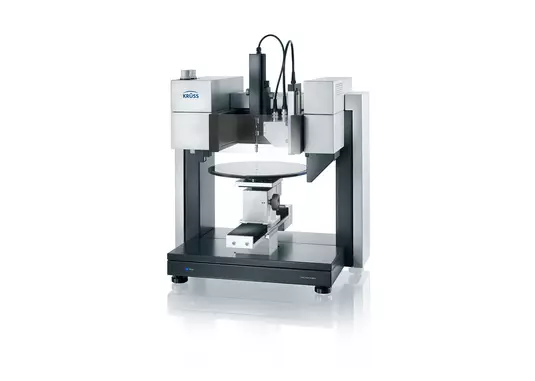Advanced Wafer Surface Analysis for Quality Control
The DSA100W Drop Shape Analyzer by Krüss is engineered for the automated quality control of wafer surfaces and other round samples, focusing on the standardized assessment of surface cleanliness and coating effectiveness. Utilizing contact angle measurement, the instrument evaluates surface cleaning homogeneity and differentiates coating characteristics, especially in distinguishing the wetting properties of exposed versus unexposed photo varnish.
Applications
Specially designed for the semiconductor and microelectronics industries, the DSA100W serves multiple applications. It’s ideal for evaluating the cleaning and coating uniformity on wafers, assessing adhesion between wafers and coatings, and investigating the wetting of photo varnishes, both exposed and unexposed. Moreover, its application extends to analyzing round samples like hard drives and brake disks, making it a versatile tool for surface analysis.
Measuring Techniques and Benefits
The heart of the DSA100W lies in its software-controlled setup featuring a rotating sample table that ensures quick and accurate contact angle measurements across any wafer position. This precision is further bolstered by a controlled dosing system that reduces pre-wetting measurement deviations. With the integration of ADVANCE software, the instrument automates the measurement process, enabling high throughput with standardized procedures. High imaging quality, achieved through a high-resolution camera and quality zoom lens, guarantees reliable drop shape analysis for exact contact angle measurements.

